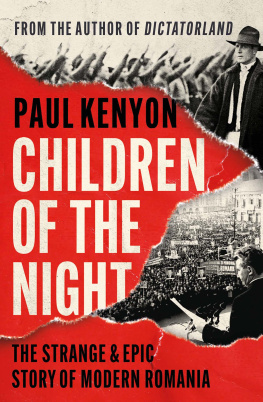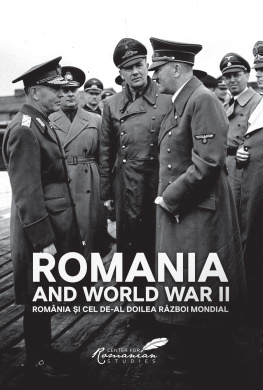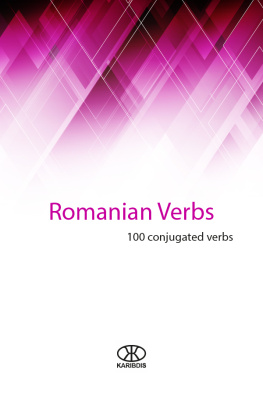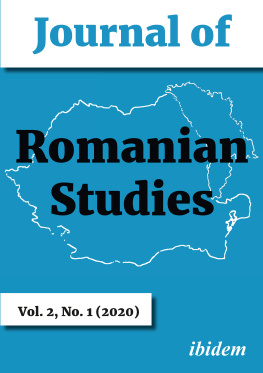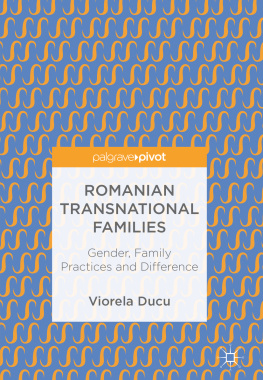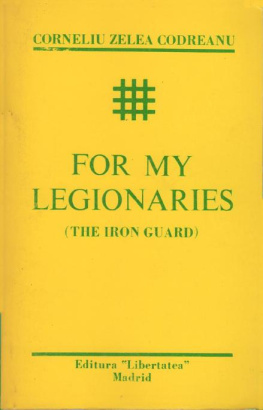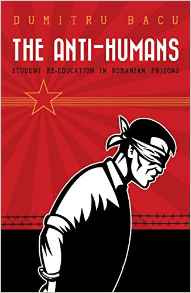Introduction
The history of the Legionary Movement is not only one of the most interesting chapters in Romanian history during the twentieth century but also an area of scholarly research that deserves extensive future investigations in libraries and archives. These efforts must take an objective and bold approach to obtain a maximum level of understanding when analyzing the topic and its many layers to correctly integrate it into a broader understanding of twentieth century Romanian and East European history. The impact of the collapse of the Communist regimes all over Europe still must be felt in historiography, as future research needs to discard the clichs that were causally used to describe the Legionary Movement, among the most persistent, those related to Corneliu Zelea Codreanu and his party members being regarded as members of a gang or an organized crime syndicate. In this context, we will observe how strange these accusations were, considering that the Romanian Communist leaders (and not only them) escaped certain charges despite historical facts to the contrary. Objectively, the founders of the Communist Party of Romania and their followers did not appreciate any comparison to the Legionaries when it came to anti-national politics. The role of the Fifth Column was to defend the Kremlins interests in Bucharest, and take responsibility for establishing a new political regime that aligned, at least in the first decades, with terror and unjustifiable mutilation of national integrity, sacrificing suzerainty and national independence. Future historical research will better define the role of the Legionary Movement in the country and in Europe that after 1918 was torn apart by conflicts and conflagrations, by economic and social crises, and by the chaos of collectivist thought. Later on, the dispute between the three isms of the twentieth century, capitalism, fascism, and communism, could no longer be ignored.
We must acknowledge that the current stage of archival documentation and general research gives us every reason to reject the dogmas of Communist propaganda. As an example, well quote from the renowned textbook called Istoria Romniei [The History of Romania], published in multiple editions under the direction of Mihail Roller (a member of the Communist Academy of Sciences), during the period when the foundation of the Communist regime in Bucharest was taking place. The passages from this textbook were used to indoctrinate a generation of students and pupils for at least a decade:
In Romania, fascism was created and developed by the leaders of the monopolistic capitalism and by the most conservative circles of landowners in the first years after the war (after World War I, 1914-1918), in the form of a [student movement] with a nationalist character. Support of this movement by reactionary politicians, on one hand, sought to suppress the students struggle for certain objectives, while on the other hand, they wanted to create certain organizations to mobilize them at events intended to achieve certain political and financial maneuvers.
In 1927, some elements of the Christian League of National Defense walked away from A.C. Cuza and founded The Legion of Archangel Michael. In 1929 the Legion was restructured and changed its name to the Iron Guard.
The Iron Guard was a fascist party from a pragmatic and an organizational point of view. On the inside, The Iron Guard was asking to create a fascist state by destroying parliamentary government, and abolishing all civilian rights and freedoms. Through its external politics, it was asking for immediate alliance with fascist Italy and especially Hitlers Germany.
The restructuring of the Legion was done with the support of the National Peasant government (under Vaida), that used it as an instrument of police diversion, meant to fight against democratic movements, and especially those of the Communist Party of Romania.
In 1933, after Hitler came to power, the two fascist groups that represented the Fifth Column in Romania, the National-Christian Party, and especially the Iron Guard, intensified their activities with funding they received from Hitler. They became an instrument for political maneuvers by groups or bourgeoise property owners inside the country and by imperialists from abroad.
The Iron Guard enjoyed the support of the government formed by bourgeoise property owners, of Carol II, and of the great industrialists and landowners, who used its resources to destroy the Romanian Communist Party. Regular subventions from German sources empowered the fascist organizations, especially the Iron Guard. It was also supported by the peasant and liberal governments that alternated in the countrys leadership and gave it the opportunity for propaganda, disruptions, and immunity against crimes and legal violations.
Between 1930 and 1937, the Legionary movement had the freedom to do as it pleased in the country. The Law of State Defense, which aimed to fight against the Guard, was not applied to the Legionaries. Between 1936 and 1937, there was no parliamentary election in which the government didnt support the Iron Guard.
The Iron Guard also received dedicated support from the National Peasant Party and from Iuliu Maniu personally, through favorable testimony given in the trial of Ducas assassins, and in 1938 at the trial of the Guards leader, and especially through the electoral pact.
Iuliu Maniu also supported them in 1939, following the assassination of Armand Clinescu.
In September 1940, the Iron Guard was brought to power alongside Antonescu, following the wishes of Hitler, who considered it as his agent in Romania.
Beginning with its establishment, until after the Legionary governments liquidation in 1941, the path of the Iron Guard was dotted with crimes and thefts, starting with the assassination of the prefect Manciu, and to the massacres before and during the time of the rebellion.
During the mass assassinations committed by Legionaries on the night of 21 and 22 January, a group of Legionaries, protected by the police, took the Communist activist Constantin David, dragged him in the Pantelimon forest, and riddled him with bullets.
When the Legionaries formed part of the government, incomplete statistics done only in the provinces showed that the goods they stole had a real and total value of 1,018,911 lei. To this were added numerous counts of mistreatment, sequestrations, home break-ins, goods taken through forced sales, requisitions, forceful occupation of buildings, and general devastation.
When it comes to the access they had to public money, the findings showed that by placing the patrimony of the old Country Defense in the administration and use of the Legionary movement, its leaders gained access to a fortune of around one billion lei.
Inside the ruling fascist groups, a power struggle began between Antonescus party members and the old leaders of the Iron Guard.
Both parties hoped for Hitlers support to ensure their control over Romania.
In January 1941, the rebellion of the Iron Guard against Antonescu began. The rebellion extended from the 22 nd to the 24 th of January and was suppressed by Antonescus troops, supported by Hitler, who needed the Romanian army to attack the Soviet Union. A few leaders of the Iron Guard escaped to Germany where Hitler used them to blackmail Antonescu. The group led by Antonescu remained to accomplish Hitlers objectives in Romania, absorbing a series of Legionary elements.
During the rebellion, theft took on gigantic proportions. After the rebellion, no less than 174 trucks with goods taken illegally were gathered in front of the headquarters and homes of the Legionary leaders in Bucharest. They contained merchandise, home goods, clothing, and food.


